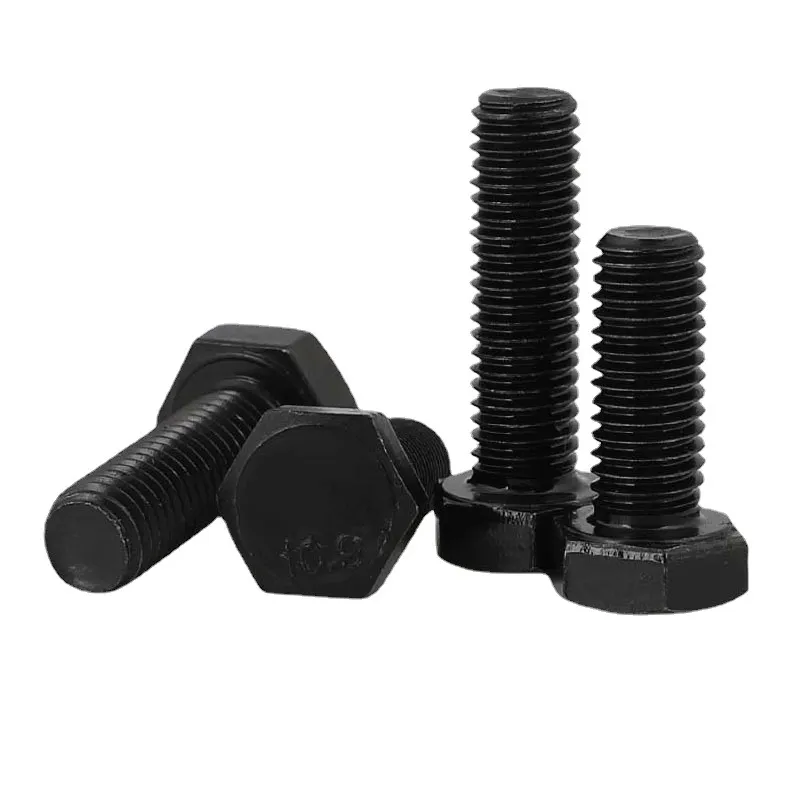

Understanding Structural Steel Anchor Bolts for Improved Construction Stability and Durability
Oct . 12, 2024 15:58 Back to list
Understanding Structural Steel Anchor Bolts for Improved Construction Stability and Durability
Understanding Structural Steel Anchor Bolts
Structural steel anchor bolts are essential components in the construction industry, playing a crucial role in the stability and integrity of structures. These bolting elements are used to secure various structures, such as buildings, bridges, and towers, to their foundations. This article delves into the types, applications, manufacturing processes, and significance of anchor bolts in modern construction.
What Are Structural Steel Anchor Bolts?
Anchor bolts are large, heavy-duty fasteners that are embedded in concrete foundations to anchor structural parts securely. These bolts are typically made of steel and come in various shapes, sizes, and types. They can be threaded rods or solid bolts, and their design varies depending on the specific application and load requirements.
Types of Anchor Bolts
There are several types of structural steel anchor bolts, each designed for specific applications
1. L-Bar Anchor Bolts These have an L shape and are commonly used for heavy machinery or structural components that require lateral support. 2. Straight Anchor Bolts These are the most common type and are used in situations where the bolt can be embedded straight into the concrete. They often come with a hook or some form of mechanical anchorage to prevent pullout.
3. J-Bolts These bolts have a hook at one end and are often used for securing signage or other components that are meant to be adjustable.
4. Sleeve Anchors Often used in lighter applications, sleeve anchors consist of a bolt encased in a sleeve that expands to grip the material.
Applications of Anchor Bolts
Structural steel anchor bolts serve a wide variety of applications
- Building Construction In skyscrapers and mid-rise buildings, anchor bolts are used to connect structural columns and beams to the foundation, ensuring stability against wind and seismic forces.
- Bridge Construction In bridges, anchor bolts secure the girders and trusses to their abutments, providing the necessary strength to support heavy loads.
- Industrial Equipment Heavy machinery and equipment often require robust anchoring to prevent movement, particularly in environments subject to vibrations or dynamic loads
.structural steel anchor bolts

- Signage and Lighting For outdoor signage and light poles, anchor bolts provide the necessary support to withstand weather conditions and provide structural integrity.
Manufacturing Process
The manufacturing of anchor bolts involves several steps
1. Material Selection Steel with appropriate properties is selected to withstand the anticipated loads and environmental conditions.
2. Forming The steel is cut and shaped into the desired configuration, whether it be straight, J-shaped, or L-shaped.
3. Threading Anchor bolts often require threading along a portion of their length, which involves precision machining to ensure proper fit with nuts and washers.
4. Heat Treatment To enhance their mechanical properties, anchor bolts may undergo heat treatment processes to increase tensile strength and resilience.
5. Coating Finally, anchor bolts may be coated with materials such as zinc to prevent corrosion, particularly in outdoor and harsh environments.
Importance in Construction
The significance of anchor bolts in construction cannot be overstated. They provide the essential connection between structures and their foundations, allowing for stability and structural integrity. Without adequately designed and installed anchor bolts, buildings and other structures would lack the necessary support and could be vulnerable to failure due to environmental factors such as wind loads, seismic activity, or soil movements.
Moreover, adherence to industry standards and regulations regarding anchor bolts is crucial for ensuring safety. Engineers must consider various factors, including load capacities, environmental conditions, and potential for corrosion when designing anchoring systems.
Conclusion
In summary, structural steel anchor bolts are vital to the construction and engineering sectors. Their varied types and applications provide flexibility in design and ensure that structures can withstand a range of forces. Understanding their significance, manufacturing processes, and proper installation is crucial for engineers and construction professionals, ensuring the safety and stability of the buildings and infrastructure we rely on daily.
Latest news
-
Hot Dip Galvanized Bolts-About LongZe|High Strength, Corrosion Resistance
NewsJul.30,2025
-
High-Strength Hot Dip Galvanized Bolts - Hebei Longze | Corrosion Resistance, Customization
NewsJul.30,2025
-
Hot Dip Galvanized Bolts-Hebei Longze|Corrosion Resistance&High Strength
NewsJul.30,2025
-
High-Strength Hot-Dip Galvanized Bolts-Hebei Longze|Corrosion Resistance&High Strength
NewsJul.30,2025
-
Hot Dip Galvanized Bolts-Hebei Longze|Corrosion Resistance&High Strength
NewsJul.30,2025
-
Hot Dip Galvanized Bolts - Hebei Longze | Corrosion Resistance, High Strength
NewsJul.30,2025

